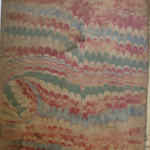I had the opportunity to transcribe quite a few documents within the Moravian Lives project, which I had never done before. At first, I was reluctant to begin reading old cursive handwriting, but once I began the assignment my opinion quickly changed. Through this assignment I was able to read and transcribe the works of Henry Unger, Rosine Tanneberger, and Anna Elizabeth Rauch.
Some of these readings were very difficult to understand, due to the many grammatical mistakes and illegible handwriting, but I enjoyed working through it. Every time that I was able to transcribe a word that gave me difficulty, I couldn’t help but feel satisfied. Once I had all of my documents typed, I then read them over and found myself very interested in what the original authors had written. It really helped my understanding of what the author was trying to convey by reading the documents when they were typed out and “uncoded” in some instances. It was very helpful working in a group for this project because when one of us was troubled by a word or phrase we could work through it together. It made the process easier and more enjoyable.
In the Henry Unger document, I was able to read a brief account of the life and faith of Ober Peyle from 1721 to 1750. It was a little confusing to understand, but I believe that Henry Unger was speaking about him as a sinner who was forgiven and joined his congregation. In the second document I transcribed, I learned about the life Rosine Tanneberger and her journey to find rest for her “soul.” Lastly, I had the opportunity to collaborate with Brendan on the Anna Elizabeth Rauch document. We both found this document to be very hard to understand, but concluded that it was an account of her journey from Jamaica to Mesopotamia.
Olivia Smith is a student at Bucknell University in Lewisburg, Pennsylvania. She was born and raised in Manasquan, New Jersey. She is currently apart of the Bucknell Women’s Rowing Team and plans to major in Psychology and Creative Writing.
